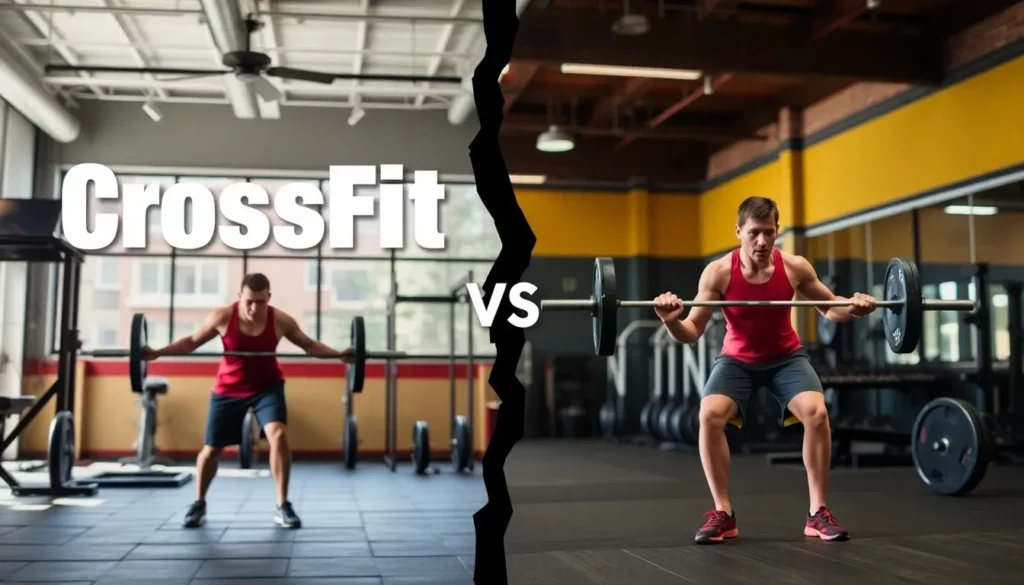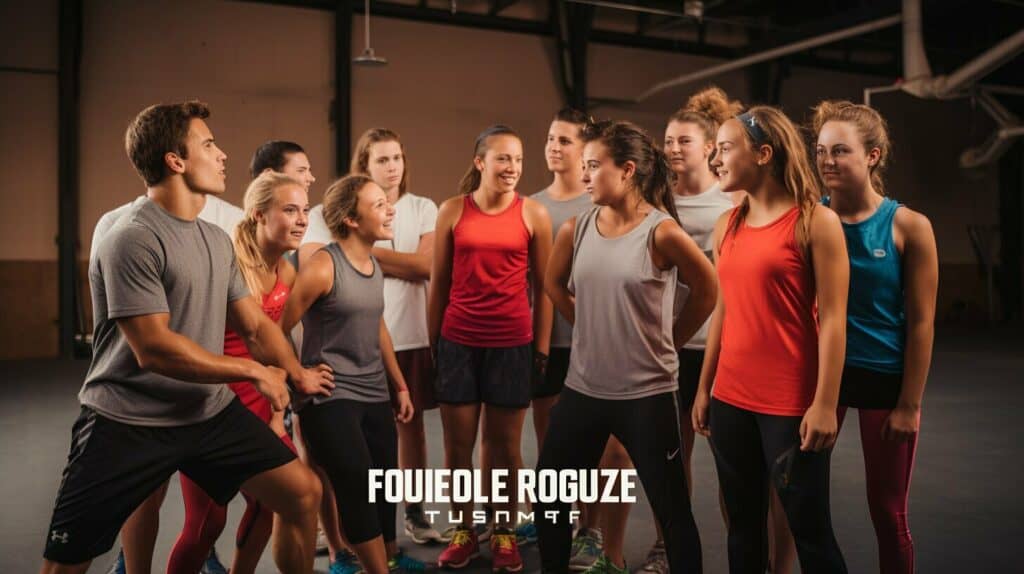CrossFit for teens is a high-intensity, functional fitness program designed for adolescents. It builds strength, improves cardiovascular health, and develops discipline through constantly varied workouts. The key is finding a qualified coach and a program like CrossFit Kids that prioritizes safety, proper scaling, and fun.
🔑 Key Takeaways
- Builds a Complete Athlete: Develops strength, power, agility, and cardiovascular endurance through gymnastics, weightlifting, and metabolic conditioning.
- Prioritizes Safety & Scaling: Successful programs like CrossFit Kids use age-appropriate equipment and scaled movements to prevent injury.
- Boosts Mental Resilience: Fosters confidence, discipline, and a growth mindset by teaching teens to overcome physical and mental challenges.
- Combats Sedentary Trends: Instills lifelong healthy habits early, helping to address issues like childhood obesity and poor metabolic health.
- Requires the Right Start: Begin with a certified coach, focus on technique over load, and ensure proper recovery and nutrition.
Benefits of CrossFit for Teens

CrossFit provides a holistic fitness foundation for adolescents. The constantly varied functional movements at high intensity expose teens to ten recognized fitness domains: cardiovascular endurance, stamina, strength, flexibility, power, speed, coordination, agility, balance, and accuracy.
This comprehensive approach builds competent, resilient young athletes. Beyond physical gains, the structured environment teaches accountability. Teens learn the direct connection between effort, nutrition, sleep, and performance. A 2026 study in the Journal of Adolescent Health linked structured fitness programs like CrossFit to improved academic focus and reduced anxiety in teenagers.
The community aspect is transformative. Workouts often involve partner or team elements, fostering camaraderie and a supportive peer network. This combats isolation and builds social skills, creating a positive environment for personal growth.
| Benefits of Crossfit for Teens |
|---|
| Develops competence in multiple fitness domains |
| Establishes healthy lifestyle habits |
| Builds resilience and boosts self-confidence |
| Fosters teamwork and camaraderie |
CrossFit Workouts for Teens: Structure & Safety
Proper teen CrossFit programming blends skill work, strength training, and metabolic conditioning. A typical session includes a dynamic warm-up, a strength or skill segment (like practicing kipping swings or front squats), and a high-intensity workout of the day (WOD).
Scaling is non-negotiable. Coaches must adjust workouts using tools like PVC pipes, lighter kettlebells, and banded pull-ups. The focus is always on perfect technique before intensity. Movements are broken down into progressions. For example, a teen masters a bodyweight air squat before adding a goblet squat with a light dumbbell.
Sample foundational movements include:
- Gymnastics: Ring rows, box jumps, hollow rocks.
- Weightlifting: Dumbbell deadlifts, medicine ball slams, light kettlebell swings.
- Metabolic Conditioning: Running, rowing, jump rope intervals.
Tracking progress in a journal or app helps teens see improvements in reps, time, or load, providing tangible motivation.
| Exercise | Sets | Reps |
|---|---|---|
| Pull-ups | 3 | 10 |
| Back Squats | 4 | 8 |
| Box Jumps | 3 | 15 |
| Push Press | 3 | 12 |
CrossFit Kids: The Gold Standard for Youth Training

CrossFit Kids is the official methodology for youth, designed by Founder Greg Glassman and developed by experts like Jeff and Mikki Martin. It’s not a mini-adult program. It uses game-based learning to develop motor skills and a love for movement in children ages 3-12, with more structured training for teens 13-18.
The program delivers proven cognitive and physical benefits. Research indicates it improves executive function, attention, and self-esteem. By making fitness fun, it directly combats sedentary lifestyles and childhood obesity, establishing healthy patterns that reduce the risk of Type 2 diabetes and other metabolic disorders.
Starting a CrossFit Kids affiliate requires a coach to hold a CrossFit Level 1 Certificate and the specialized CrossFit Kids Certificate. They use the CrossFit Kids Startup Curriculum, which emphasizes safety, scalability, and creating a positive, encouraging environment.
| Benefits of Crossfit Kids | Cognitive Benefits | Health Benefits |
|---|---|---|
| Instills a love for fitness | Improves attention, mood, and self-confidence | Combats childhood obesity and Type 2 diabetes |
| Develops strength and endurance | Enhances cognitive abilities | Promotes overall physical health |
| Fosters teamwork and camaraderie | Encourages a positive mindset | Establishes healthy lifestyle habits |
Starting CrossFit for Teens: A Parent’s Guide
Finding the right gym is critical. Look for an affiliate with a dedicated teen or CrossFit Kids program, credentialed coaches, and a clear safety protocol. Schedule a visit to observe a class—note the coach-to-athlete ratio and the emphasis on form.
Set Realistic Expectations
- Progress is measured in skill acquisition and consistency, not just pounds lifted.
- Focus on beating personal records, not competing with others.
- Understand that adaptation takes time; encourage patience and celebrate small wins.
Promote Proper Recovery
- Prioritize Sleep: Teens need 8-10 hours for hormone regulation and muscle repair.
- Fuel Performance: Emphasize balanced meals with protein, complex carbs, and healthy fats. Hydration is key.
- Schedule Rest: 2-4 sessions per week is sufficient. Active recovery days should include walking or mobility work.
Encourage open communication with the coach. A good coach will provide feedback to parents and educate teens on listening to their bodies to prevent overuse injuries.
| Benefits of Fitness Classes for Teens | Why They Are Important |
|---|---|
| Individualized Instruction | Help teens learn proper form and technique, reducing the risk of injury. |
| Goal-Driven Atmosphere | Encourages teens to set and achieve fitness goals, boosting motivation and confidence. |
| Social Interaction | Allows teens to connect with peers who share similar interests and aspirations, fostering camaraderie and teamwork. |
The Power of CrossFit for Teens: Unlocking Their Full Potential

CrossFit equips teens with more than fitness; it builds life skills. The discipline to show up, the resilience to finish a hard workout, and the confidence from achieving a goal translate directly to academic and personal challenges.
This training unlocks athletic potential for sport-specific athletes by developing a broad base of general physical preparedness (GPP). More importantly, it provides a positive identity and community outside of traditional school cliques, which is invaluable for mental health.
The ultimate goal is to create a lifelong positive relationship with health and fitness, setting the foundation for a strong, capable, and confident adulthood.
❓ Frequently Asked Questions
Is CrossFit safe for teenagers who are still growing?
Yes, when coached correctly. Programs like CrossFit Kids use scaled movements, light equipment, and prioritize technique over heavy load, which protects growth plates. The focus is on developing motor control and capacity safely.
What’s the difference between CrossFit Teens and CrossFit Kids?
CrossFit Kids (ages 3-12) is heavily game-based to develop fundamental movements. Teen programs (13-18) introduce more structured strength and conditioning while maintaining scaled workouts, focusing on preparing them for adult training safely.
How often should a teen do CrossFit?
2 to 4 sessions per week is ideal for most teens. This allows for adequate recovery, participation in other sports, and academic commitments. Quality and consistency are far more important than frequency.
Can CrossFit help my teen in other sports?
Absolutely. It builds General Physical Preparedness (GPP)—the base strength, power, and conditioning that enhances performance in any sport. Many high school athletic programs now incorporate CrossFit methodologies for this reason.
What should we look for in a good teen CrossFit gym?
Look for credentialed coaches (CrossFit L1 + Kids), a separate program/class for teens, a clear emphasis on technique and scaling, age-appropriate equipment, and a positive, inclusive community culture. Always do a trial class first.
Conclusion
CrossFit offers a powerful, comprehensive solution for teen fitness. It builds physical strength, mental toughness, and healthy habits within a supportive community. The critical factor for success and safety is choosing the right program—one led by certified coaches who specialize in youth athletics and prioritize proper movement over intensity.
The next step is to research local CrossFit affiliates with dedicated teen or CrossFit Kids programs. Schedule a visit, ask about coaching credentials and their philosophy on scaling, and let your teen try an introductory class. This investment goes beyond fitness; it’s an investment in their confidence, health, and future.
References

- What is CrossFit Kids? – CrossFit.com
- The Measurable Health Benefits of CrossFit Kids – CrossFit Journal
- Effects of High-Intensity Functional Training on Adolescent Mental Health – NIH
- CrossFit for Teens: What Parents Need to Know – Shape
- The Top Benefits of CrossFit for Kids and Teens – Gantry Kids
